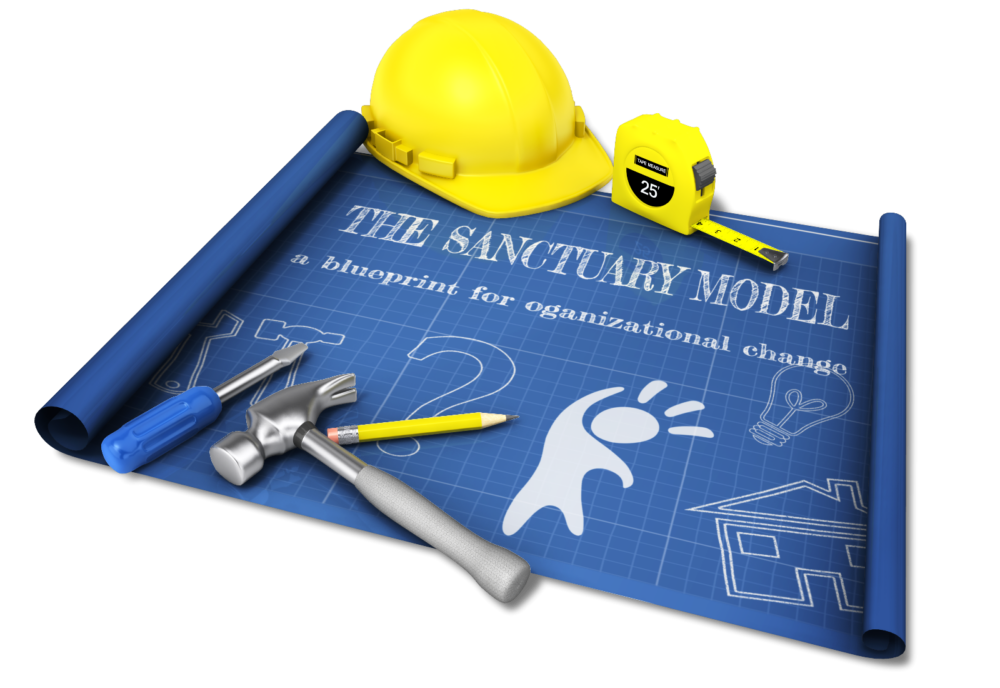In 2018, Gwen’s Girls adopted The Sanctuary Model® as a restorative approach to address the trauma their girls and their families experienced. Over three years, the organization will work to obtain certification, symbolizing a higher level of care and a trauma-sensitive environment for both clients and staff. This process affirms Gwen’s Girls commitment to provide a safe, secure and developmentally appropriate space where clients and staff not only address trauma but also recover and thrive. Research shows that certified organizations experience improved treatment outcomes, reduced violence and increased staff communication and satisfaction.
This holistic, full-system approach creates a shared language and vision, encouraging all members of the community to adopt the model and commit to change.
Instead of asking, what’s wrong with you the question shifts to ask what’s happened to you.
What is The Sanctuary Model®?
The Sanctuary Model® is a blueprint for clinical and organizational change which, at its core, promotes safety and recovery from adversity through the active creation of a trauma-informed community. The model focuses equally on those seeking services and the people and systems providing service.
According to Founder Dr. Sandra Bloom, the Sanctuary Model® gets everyone–those who don’t have a common way of working with clients, such as social workers, psychiatrists and nurses–on the same trauma-informed page. This builds high-functioning teams and collaborative environments. Ultimately, the providers work more effectively and therapeutically with traumatized clients and improve treatment outcomes. The goal–increased levels of hope, safety, trust, emotional intelligence and problem solving skills for both providers and clients.
How does the Sanctuary Model® support healing from trauma?
The model creates safe environments through Seven Commitments, each geared at reducing levels of trauma for providers and clients:
- Commitment to Nonviolence: building and modeling safety skills
- Commitment to Emotional Intelligence: teaching and modeling affect management skills
- Commitment to Inquiry & Social Learning: building and modeling cognitive skills to learn from one another
- Commitment to Democracy: creating and modeling civic skills of self-control, self-discipline, and administration of healthy authority
- Commitment to Open Communication: overcoming barriers to healthy communication, reduce acting-out, enhance self-protective and self-correcting skills, teach healthy boundaries
- Commitment to Social Responsibility: rebuilding social connection skills, establish healthy attachment relationships
- Commitment to Growth and Change: restoring hope, meaning, purpose
How is Gwen’s Girls adopting the Sanctuary Model®?
The models allows Gwen’s Girls to directly address problems and symptoms girls experience that are related to posttraumatic stress disorder (PTSD) or exposure to trauma, chronic stress and adversity.
Community meeting is one of the many ways Gwen’s Girls adopts the principles and tools of the Sanctuary Model®. Girls and staff participate in community meetings before the start of each program or meeting. This creates a healthy environment with predictability and routine. It also allows for regular check-ins and bridges the gap from present to the future by asking three questions:
- How are you feeling today?
- What is your goal for today?
- Who can you ask for help?
On an administrative level, Gwen’s Girls incorporates the Seven Commitments into monthly supervision activities and annual performance reviews.
How can the community engage with the Sanctuary Model®?
Using resources in the Sanctuary Tool, Gwen’s Girls engages with community members to create plans, such as self-care treatment plans and safety plans. The group works in partnership to recognize and name feelings, identify triggers, use coping skills, and read social cues.
Red Flag meetings are held to respond to critical incidents involving a child. Together, the community develops a written plan to be shared with all involved, including the child. The more people helping to solve a problem, the more likely it is to be handled well, especially if each person is given a specific task or role.

